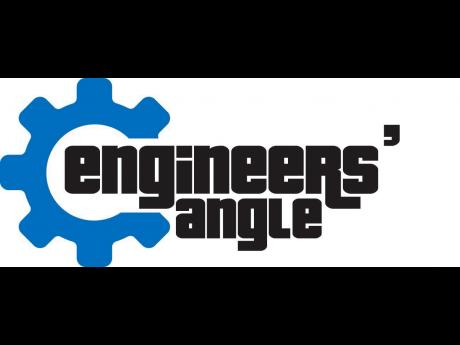Engineer’s Angle | Concrete droppings on the roads fix
The problem of concrete droppings on roads is a major concern for several Jamaicans as persons operating vehicles carrying concrete seem to have no care for what spills out.
The concrete, when spilt, forms a hard, rough and irregular mound that serves as a hindrance to the smooth flow of traffic.
It was reported that the agencies which have responsibility for the management of vehicular traffic and the maintenance and safety of roads had advanced plans that would resolve the problem but it appears nothing has yet been done.
Concrete, with steel reinforcement, is one of the strongest and most versatile and durable materials in the construction industry. This material is therefore utilised on a significantly high number of construction projects islandwide and hence a large volume of concrete is supplied to satisfy the demand.
In the case of ready-mixed concrete, the materials for the concrete are usually placed in the mixer of the truck at the concrete plant before departure to the construction site and mixing commences then or during the journey to the destination of the material.
The initial setting time for traditional Portland cement concrete is approximately an hour after water is intimately mixed with the cement and therefore, to minimise the risk of the material hardening in the mixer, water reducing admixture is used in the ready-mixed concrete in many instances.
This admixture has the ability to increase the consistency of the concrete but even more important in this context, the compound, when added in a relatively high concentration, can also retard hydration and temporarily delay setting of the concrete.
The spillage of concrete occurs when there is a significant thrust on the material in the drum on concrete trucks. In the fresh state, concrete is a viscous liquid and is susceptible to flow or movement when it experiences a stress that exceeds the yield stress in the internal structure of the material.
The stress on the concrete may occur when the truck driver changes gear as it comes to a stop at the traffic light or negotiates a bend, as is evident at the traffic lights along Washington Boulevard, at Central Avenue and Constant Spring road; and around some bends along Red Hills Road and Sunset Ave.
It should also be mentioned that the probability of displacement is also increased as the consistency of the concrete increases and hence, with all things being the same, plasticised concrete will have a greater propensity for spillage.
The condition of the mixer can also contribute to spillage. Typically, the total volume of concrete in the mixer is usually kept below the maximum volume of the mixer on the truck to facilitate mixing of the concrete and to prevent against spillage.
However, concrete can harden on the internal surface of the mixer and over time its accumulation reduces the capacity of the mixer. This reduction may present some difficulty in the determination of the effective volume of the mixer and contribute to overloading, which increases the probability of spillage.
Incidences of concrete droppings also occur when truck drivers partially clean the mixer after the delivery of concrete and the remaining portion drains from the truck on its return trip to the concrete plant.
One of the initial proposals to address the problem was to impose a tax on all concrete manufacturers. This will not necessarily reduce the incidences of concrete droppings on the roads.
Indeed it will help to fatten the government’s kitty but there is no guarantee that a programme to timely remove accidental deposit of concrete from the roadways will be implemented.
The recommended consultative process between government entities and stakeholders should examine:
• The idea of securing the gate (exit point) of mixers with lids that prevents spillage. This measure is used effectively in some countries and it can be easily policed.
• The implementation of a special training programme for the drivers of concrete trucks. This will help drivers to better manage the vehicles and hence promote safe and secure conveyance of the concrete.
• The introduction of biannual inspection of concrete trucks to ensure that the interior of the mixture is cleared of built-up concrete; and in the case of significant accumulation of hardened concrete, the capacity of the mixture should be officially reduced accordingly.
• A mandatory provision of a designated area on all construction sites for the washing of concrete trucks. This enables proper washing of trucks which will then reduce the accumulation of hardened concrete in the mixture and also prevent the residue in the truck from draining on to the road.
The above points that are intended to initiate dialogue among stakeholders.
- Dr Marva Blankson works as an associate professor and the director of the Civil Engineering Department at the Faculty of Engineering and Computing, University of Technology, Jamaica.
Send questions and comments to, editorial@gleanerjm.com or jie@cwjamaica.com. You may also leave your comments for the JIE's Technical Committee at our Facebook page: Jamaica Institution of Engineers - JIE.



